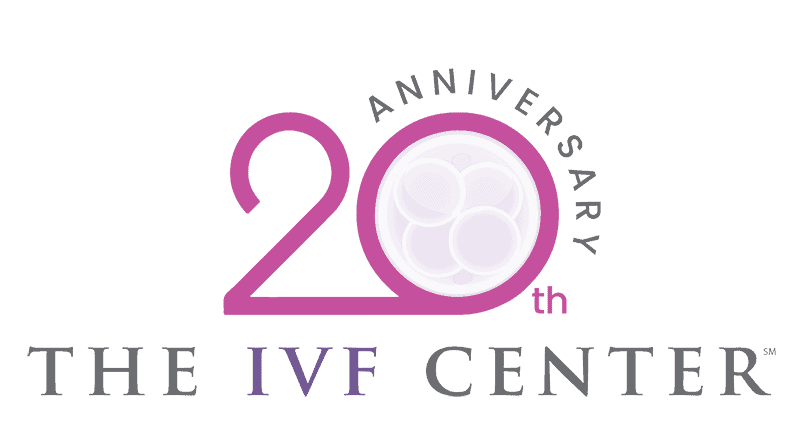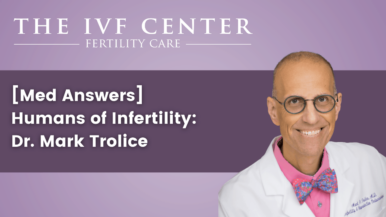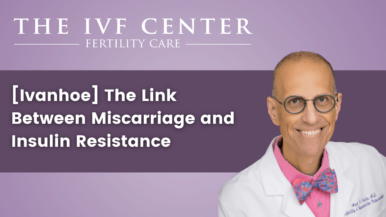There is a lot to know about conceiving a child, particularly when you’re having some difficulties with fertility. The articles that we write and publish here at TheIVFCenter.com are meant to help guide your decisions when it comes to building your family. Here is a good starter list of some of the most common Infertility questions.
 1. What is The Medical Definition of infertility?
1. What is The Medical Definition of infertility?
A commonly accepted definition of infertility is the inability of a couple to conceive after 12 months of unprotected intercourse appropriately timed with ovulation. The estimated incidence of infertility is 10 to 15% of the general population. Interestingly, the monthly rate of conception for couples without fertility problems is only 20 to 25% percent and after one year approximately 85% of these couples will have conceived.
2. What are The Common Causes of Infertility?
Infertility is commonly approached as treatment of a couple and should not be viewed as a fault of the female or male alone. During the evaluation, factors can be identified as potentially contributing to the cause of infertility. The breakdown is approximately:
40% Female Factors
40% Male Factors
20% Unexplained: Tubal blockage, Poorly Functioning Sperm, No Identifiable Cause, Ovulatory Dysfunction.
In approximately 30 to 40% of couples, multiple infertility factors are found together.
3. What are Fertility Medications & How Do They Work?
The most common fertility medications are classified as Ovulation Induction Drugs and have been approved for patients with ovulation disorders. However, they are also utilized for ‘super’ ovulation. These medications by-pass the usual female hormonal pathways and stimulate the ovary to produce more than the usual one follicle per month, increasing the number of eggs exposed to sperm, thereby increasing the chance for pregnancy.
One type, Clomiphene Citrate (Clomid, Serophene), is administered in a tablet form and usually results in one or two follicles each cycle. The other class are called Gonadotropins (Repronex, Follistim, Gonal-F ) and are currently administered by injection. They can stimulate the ovary to produce many dominant follicles each cycle. These medications can be combined with intercourse, intrauterine insemination, or In-vitro Fertilization (IVF) to enhance one’s chance for conception.
4. Why Would I Need a Laparoscopy?
Your gynecologist will have you undergo testing to determine the possible cause of infertility. Unfortunately, 20% of couples experience unexplained infertility. This diagnosis can only truly be made after a Laparoscopy which is an outpatient same day operative procedure. Laparoscopy inserts a telescope through the belly button into the abdomen to view the internal pelvic reproductive organs. This procedure will allow a definite diagnosis of pelvic adhesions, tubal scarring or blockage, endometriosis, or other abnormalities. These problems could contribute to infertility and may be treated at the time of the surgery.
5. What is a Hysterosalpingogram (HSG)?
During an evaluation for infertility, 40% of couples are found to have a female factor which commonly is tubal blockage or ovulation disorder. In order to assess the fallopian tubes, an HSG is performed. An HSG is an office procedure in which an X-ray is taken while contrast dye is instilled through the cervix into the uterus and tubes. The patient is awake and can often watch the monitor with the physician to see the results of the study.
6. What is Intrauterine Insemination (IUI)?
IUI is the use of husband or donor sperm to inseminate into the uterus. The semen sample is washed, prepared and then placed into the uterus by passing a small plastic catheter through the cervix. This is an office procedure and is usually associated with no discomfort. The procedure places a large concentration of sperm into the upper uterus so they are closer to the fallopian tubes where they travel to fertilize an egg.
7. What is The Relationship Between Fertility & Age?
A woman is born with all of the eggs she will ovulate in her lifetime. Until puberty, the eggs are resting at a certain stage of development. Beginning with the first menses (menarche), hundreds eggs are stimulated each month but only one egg will complete development and ovulate, the rest will regress.
As a woman ages, the number of eggs diminish. This explains the studies of women demonstrating a consistent decline in reproductive capacity beginning approximately around ages 33 – 35. There is a more marked decrease after age 40 due to older and less responsive eggs. In addition to the monthly decline in pregnancy, there is an increase in miscarriages and genetic abnormalities of the embryo with advancing age.
Age can also affect males in terms of sexual function, frequency of sexual relations, and sperm production. However, the semen analysis does not show significant decline generally until after age 60.
8. What is The “Work-Up” for The Male?
Since 40% of infertile couples will have a male factor, it is imperative to evaluate the male. The initial work-up will include a history to investigate any potential areas that could be contributing to infertility. While there is no definitive screening test (outside of pregnancy), the best definitive screening test for a male factor is the semen analysis. This examination of the collected sperm evaluates most importantly count (density), motion (motility), and shape (morphology). Based on these results, a decision may be made to proceed with further investigation by a urologist, preferably one who specializes in male infertility.
9. What is In-Vitro Fertilization (IVF)?
IVF is an assisted reproductive technology procedure whereby fertilization of the egg and sperm occur in the laboratory or ‘in-vitro.’ The woman receives stimulation with one of the injectable fertility medications (gonadotropins, discussed above). When the ovaries contain multiple mature eggs, she then undergoes a minor procedure under sedation to retrieve the eggs by placing a needle through the vagina into the ovary under ultrasound guidance. Approximately 4 to 6 hours later, sperm are added to each of the eggs and then checked for fertilization the next day. The embryos are transferred to the uterus 3 – 5 days after the ‘retrieval’ procedure. A pregnancy test is taken 2 week later.
10. When Should I See a Fertility Specialist?
This is an excellent question, but one that is very individualized depending, most importantly, on the diagnosis, female age, patient motivation level and financial resources. In general, after the gynecologist has performed an initial work-up, the patient AND the gynecologist should devise a plan and time line after which referral should be recommended to a Reproductive Endocrinologist (Fertility Specialist). There are some situations where a patient should be referred immediately to a fertility specialist, e.g. advanced reproductive age, severe male factor, and blocked fallopian tubes.
We are Central Florida’s most successful IVF Program.
To learn more about our work, please schedule your consultation or join the conversation on Facebook and Twitter.






